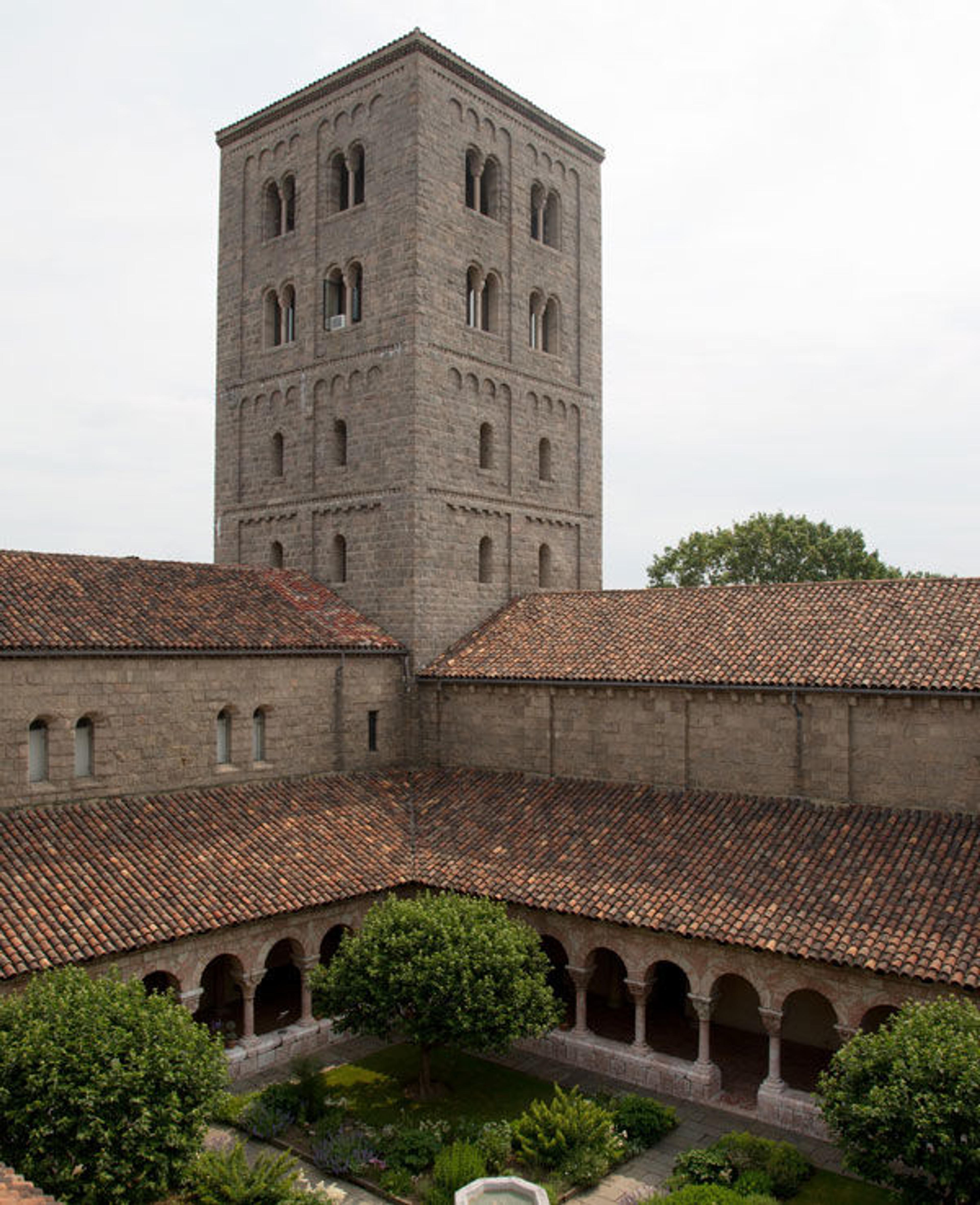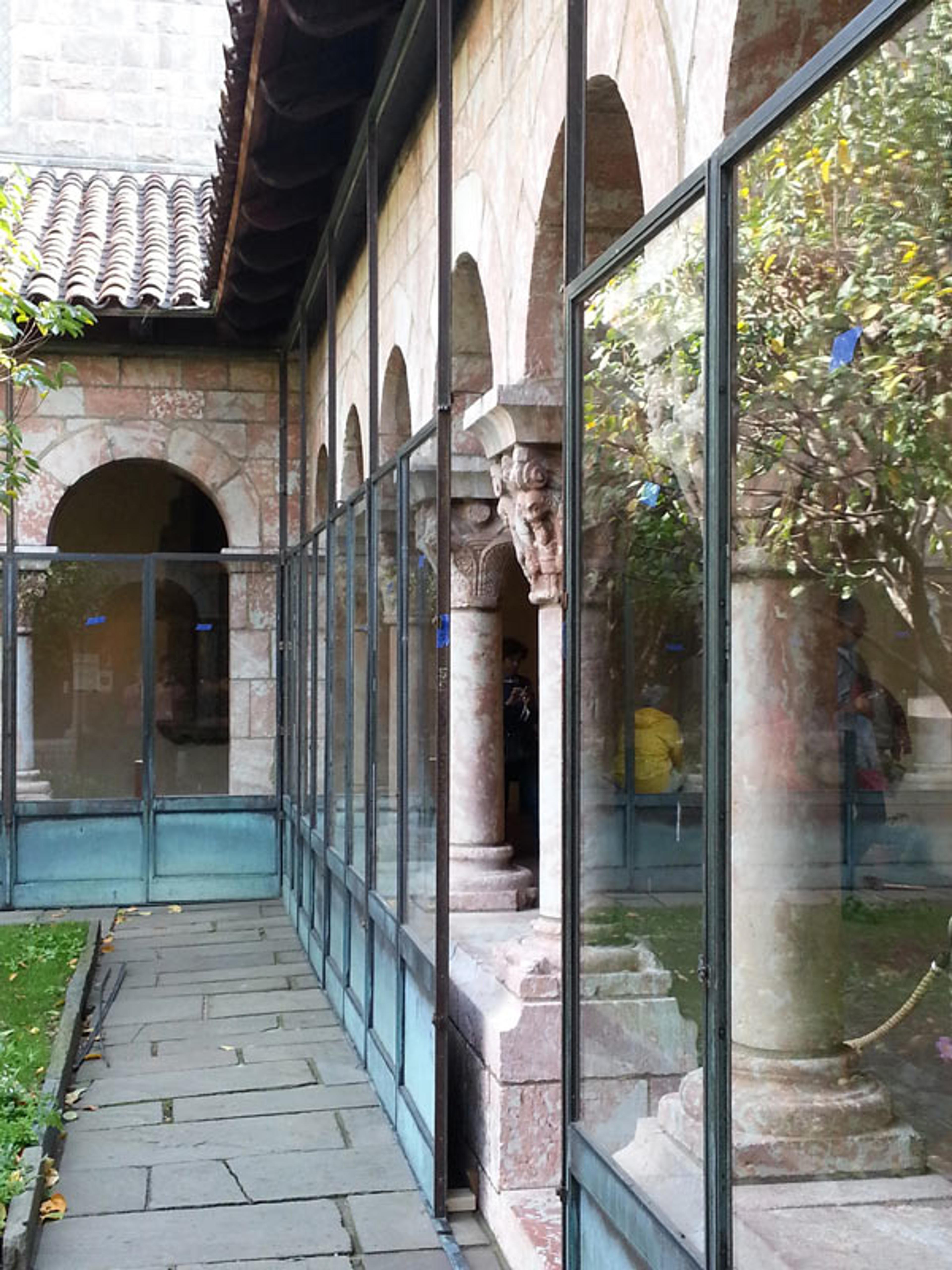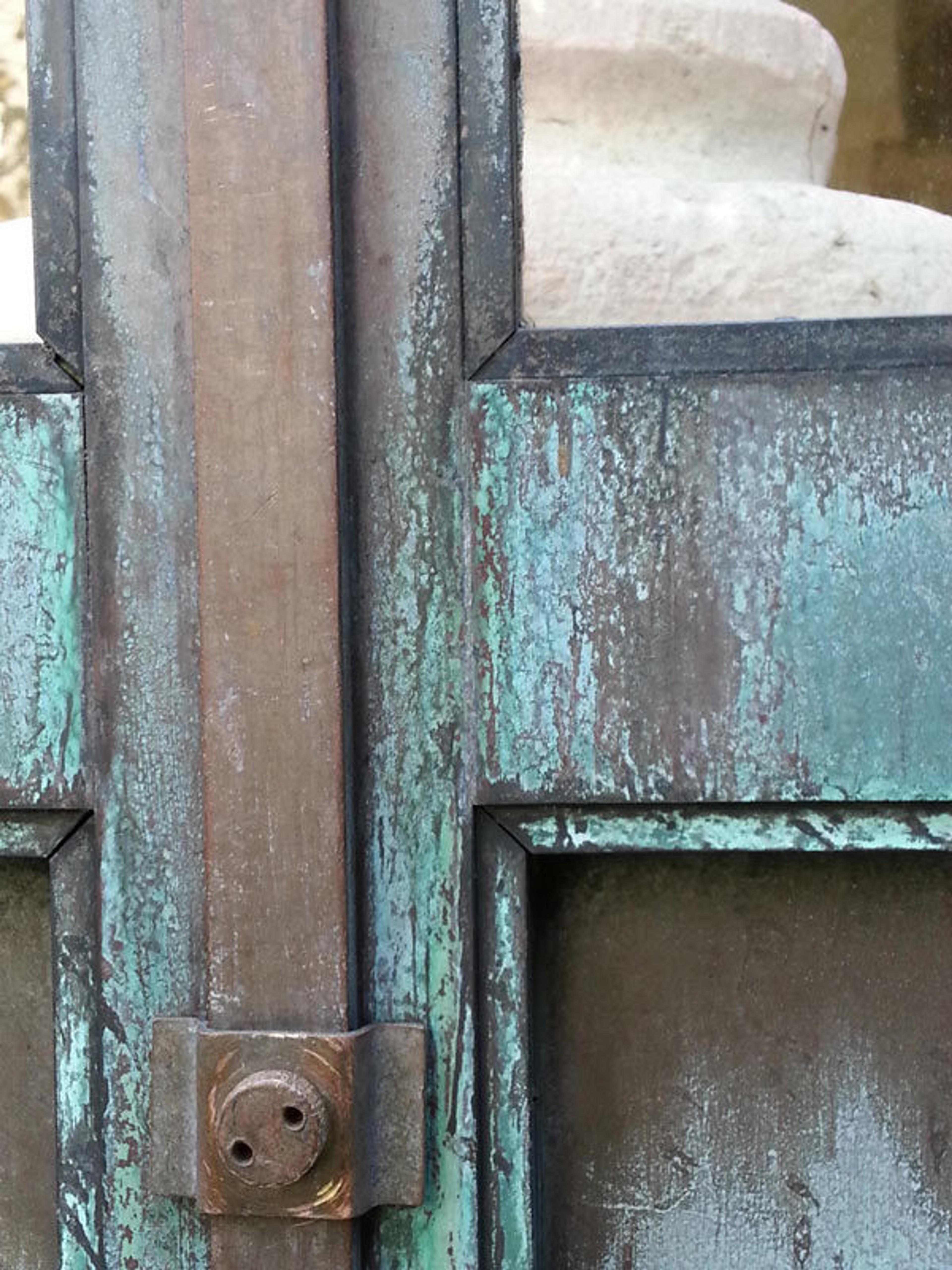In Anticipation of "Soft-Dying" Days

Cloister from Saint-Michel-de-Cuxa from above. Photograph by Karin Willis
«I have borrowed an evocative description of the season from the great English Romantic poet John Keats. His "Ode to Autumn" (see below) was written in September 1819 and published the following year, and it serves as an elegy to his career as a poet. Keats's personification of autumn reveals the progression from the ripening of summer fruit to the fall harvest, the fading of spring birdsong to the bleating of mature lambs.»
The seasons are marked in many ways at The Cloisters museum and gardens, as frequent visitors know. A certain and significant harbinger of autumn is the installation of protective glass panels in the Cuxa Cloister.

Bronze frame and glass panels during installation. Photograph by Christina Alphonso
One's view from the Cuxa Cloister arcades changes dramatically, framed entirely by the medieval architectural elements and modern tile rooflines; the garden is no longer accessible. The garden goes dormant, the unique structure of the pollarded crabapple trees is revealed, the angle of the sun and quality of light shift, the central fountain is covered, and its sound, as well that of the ubiquitous sparrows, is muffled.
Even in the earliest stages of the planning of The Cloisters, the need to protect the galleries from winter weather was noted. Cuxa Cloister is at the center of the museum, providing open-air access to its garden and to the surrounding galleries from mid-April to mid-October. The very handsome bronze panels, doors, and framework were custom-designed for the space by Suburban Bronze Works in Richmond Hill in 1937 and are still in use today. Bronze rails are installed under the eaves and on the paths, which secure the upper and lower glass panels and access doors.

Detail of the join between the bronze panels. Photograph by Christina Alphonso
The glass panels were just installed for the season last week, and our potted-plant collection has been moved into the protection of Cuxa's arcades for the winter (for more on these plants, see "Coming In From the Cold" [October 28, 2011] on The Medieval Garden Enclosed).
Ode to Autumn
J. Keats
SEASON of mists and mellow fruitfulness,
Close bosom-friend of the maturing sun;
Conspiring with him how to load and bless
With fruit the vines that round the thatch-eaves run;
To bend with apples the moss'd cottage-trees,
And fill all fruit with ripeness to the core;
To swell the gourd, and plump the hazel shells
With a sweet kernel; to set budding more,
And still more, later flowers for the bees,
Until they think warm days will never cease;
For Summer has o'erbrimm'd their clammy cells.
Who hath not seen thee oft amid thy store?
Sometimes whoever seeks abroad may find
Thee sitting careless on a granary floor,
Thy hair soft-lifted by the winnowing wind;
Or on a half-reap'd furrow sound asleep,
Drowsed with the fume of poppies, while thy hook
Spares the next swath and all its twinèd flowers:
And sometimes like a gleaner thou dost keep
Steady thy laden head across a brook;
Or by a cyder-press, with patient look,
Thou watchest the last oozings, hours by hours.
Where are the songs of Spring? Ay, where are they?
Think not of them, thou hast thy music too,—
While barrèd clouds bloom the soft-dying day
And touch the stubble-plains with rosy hue;
Then in a wailful choir the small gnats mourn
Among the river-sallows, borne aloft
Or sinking as the light wind lives or dies;
And full-grown lambs loud bleat from hilly bourn;
Hedge-crickets sing; and now with treble soft
The redbreast whistles from a garden-croft;
And gathering swallows twitter in the skies. (Source: Bartleby)
Related Link
YouTube: John Keats's "To Autumn" read by Ben Whishaw
Christina Alphonso
Christina Alphonso is the administrator at The Met Cloisters.